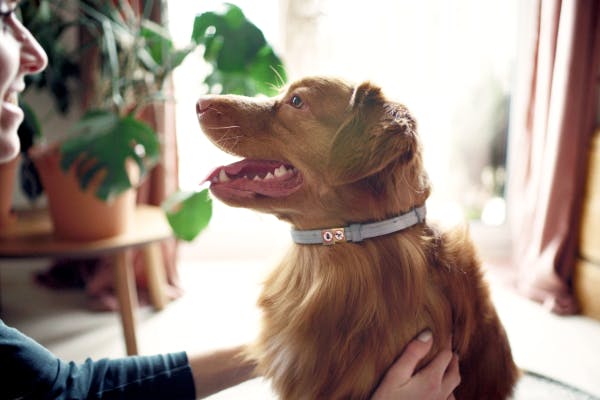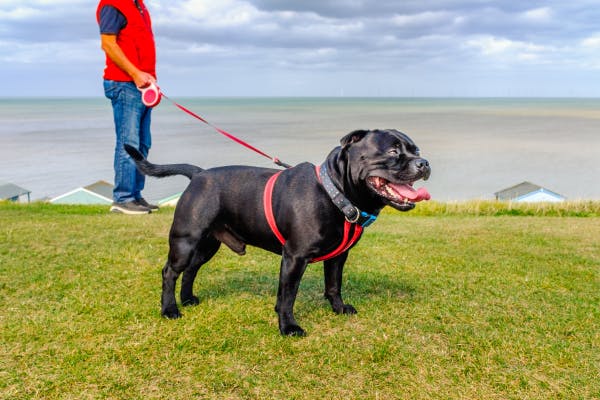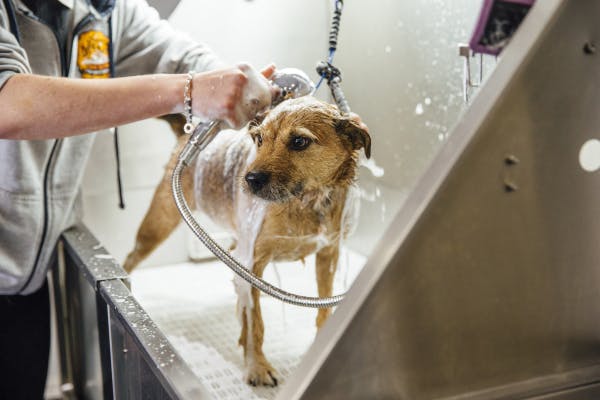learn about hands free dog leashes
Exploring the Pros and Cons of Hands-Free Dog Leashes
Hands-free dog leashes offer benefits such as reduced strain on hands and shoulders, improved walking experience, and suitability for running and pulling workouts. However, they may provide less control, be unsuitable for dogs who pull, and pose safety concerns.

Hands-free dog leashes are great for their convenience and potential benefits for both dogs and their owners. These leashes can reduce strain on the hands, wrists, arms, and shoulders, and are particularly useful for running or engaging in pulling workouts with your dog. However, it's important to consider the potential drawbacks and whether a hands-free leash is suitable for your specific dog and situation.
Benefits of Hands-Free Dog Leashes
Hands-free dog leashes provide several advantages for both dogs and their owners. Here are some key benefits:
Less Strain on Hands, Wrists, Arms, and Shoulders: A hands-free dog leash reduces strain on your hands, wrists, arms, and shoulders because it clips onto a belt around your waist. This frees up your hands and spreads the force across your body when your dog pulls.
Good for Well-Behaved Dogs: If your dog walks nicely on a leash, a hands-free leash can improve your walking experience. You can do other activities like shopping or getting coffee while walking your dog in the neighborhood or park.
Excellent for Running with Your Dog: If you enjoy running with your dog, a hands-free leash is very helpful. Dogs usually pull less when running beside their owners than when walking. So using a hands-free leash makes running with your dog more fun and less tiring.
Good for Pulling Workouts: A hands-free leash is great for high-intensity workouts where your dog pulls you during runs or hikes in uncrowded places. This gives your dog a good workout and helps you run faster or climb hills more easily.
Useful for Practicing Leash Walking Skills Indoors: You can use a hands-free leash indoors to practice polite leash walking skills in an area with fewer distractions like other dogs or small animals such as cats and squirrels.
While not suitable for all dogs and owners, hands-free leashes offer many benefits for those who find them right for their needs.
Understanding the Drawbacks of Using Hands-Free Dog Leashes
Hands-free dog leashes have become popular because they are convenient. But, they also have some drawbacks. These problems can affect both the dog and the owner during walks or runs.
Lack of Control: A big disadvantage of using a hands-free leash is that it gives you less control than a regular leash. This can be a problem for people who are not as strong as their dogs. Even if the dog does not usually pull, unexpected things like seeing a squirrel or another animal can make them move suddenly. This can cause falls and injuries.
Difficulty with Dogs Who Pull: Hands-free leashes might not be good for dogs who pull a lot. If you do not plan to do activities like canicross (where the dog pulls the runner), walking with this type of leash will not be fun. If the dog keeps pulling, it could hurt your back.
Not Good for Loose-Leash Walking Practice: If you want to teach your dog to walk on a loose leash or heel, hands-free leashes might not be the best choice. When you are not holding onto the leash, it is harder to change and correct your dog's behavior.
Safety Concerns: The safety of both you and your dog is very important when choosing new gear for walks or runs. Remember that hands-free leashes are only good if you have enough body strength and balance to control your dog completely.
Not Good for All Dogs: Hands-free leashes have many good things, but they are not right for every dog or situation. They work best for well-trained dogs who walk nicely on a loose leash and listen well to voice commands.
So, while hands-free leashes have some benefits like letting you use your hands and making it easier on your arms, they also have some problems. Before changing from regular leashes to hands-free ones, think about these things carefully.
best hands free dog leashes
- our rating95 out of 100
- our rating92 out of 100
- our rating90 out of 100
Picking the Best Hands-Free Dog Leash
Choosing the right hands-free dog leash can be challenging because there are many options. But, thinking about certain factors can make it easier and help you pick a leash that works for you and your dog.
First, think about what you will use the leash for, like walks or exercise. The material of the leash is important too. Some leashes are made from nylon or leather, which are strong and lightweight, making them good for everyday use.
The length and width of the leash should also be considered. Pick these based on your dog's size and strength, as well as how well you can control them.
Another important thing to think about is how the leash connects to your dog's collar or harness. The fastener should be safe and simple to use.
Lastly, style is another factor that might affect your choice. While all leashes have a similar purpose, they come in many colors and designs that can make your dog walking routine more fun.
When picking a hands-free dog leash, remember to think about its purpose, material, length and width, fastener type, and style. By considering these factors, you can find a leash that works well for both you and your dog's needs.
Teaching Your Dog to Use a Hands-Free Leash
Teaching your dog to use a hands-free leash can make your bond stronger. To do this, you need to be patient, consistent, and use positive reinforcement.
Getting Used to the Leash
First, let your dog get used to the leash in a comfortable place like your home or backyard. Let them explore and feel the leash without any pressure. During this time, give your dog praise for being curious and brave.
Slowly Make It Harder
Slowly make it harder by adding distractions and practicing in different places. Be consistent by practicing often and keeping the same rules and expectations. This will help your dog learn to like the leash.
Using Basic Commands
As your dog gets better, start using basic commands like sit, stay, and come during training. This will help their overall behavior and make walks more fun.
Important Items for Training
A Good Harness: A harness that fits well helps spread pressure evenly on the dog's body. This lowers the chance of injury or discomfort.
The Right Leash Length: A leash that is four to six feet long is best for control and freedom.
Small Treats: Treats are a great way to encourage good behavior during training.
Common Problems in Leash Training
Leash training might not always be easy. You might face some problems like:
Your dog pulling on the leash: If this happens, stop where you are until they calm down before going on.
Your dog getting distracted: Use treats or toys to get their attention back.
Your dog not wanting to wear a harness or collar: Be patient and let them get used to it slowly.
Being patient is important when teaching your dog about leashes. The goal is to make it a good experience for both of you!
Safety Tips for Using Hands-Free Dog Leashes
Hands-free dog leashes can be helpful for dog owners who like to walk, hike, or jog with their pets. But there are some safety tips to remember.
Not all dogs are good for hands-free leash use. Big dogs, strong dogs, or dogs that pull hard can hurt the person holding the leash. If your dog does this, do not use a hands-free leash until your dog's behavior is better.
Using a hands-free leash means you need to watch your dog and your surroundings carefully. If your dog moves suddenly, you could lose balance and fall.
Even though hands-free leashes can make it easier on your shoulders and back, they can still hurt you if your dog pulls hard or fast. If using the leash causes pain or discomfort, stop using it.
Hands-free leashes give you more freedom when walking or running with your dog but also need more responsibility. Make sure you always have control over your dog to avoid problems with other people or animals.
Here are some tips for safely using hands-free leashes:
Use hands-free leashes only with well-trained dogs that do not pull hard or move quickly.
Be alert and aware of what is happening around you when using a hands-free leash.
If you have a big or strong dog, ask a professional trainer for advice before using a hands-free leash.
Do not use hands-free leashes in crowded places where your dog's sudden movements could cause accidents.
Check your leash often for signs of damage that could make it unsafe.
Remember: safety should always come first when choosing how to walk your dog.








